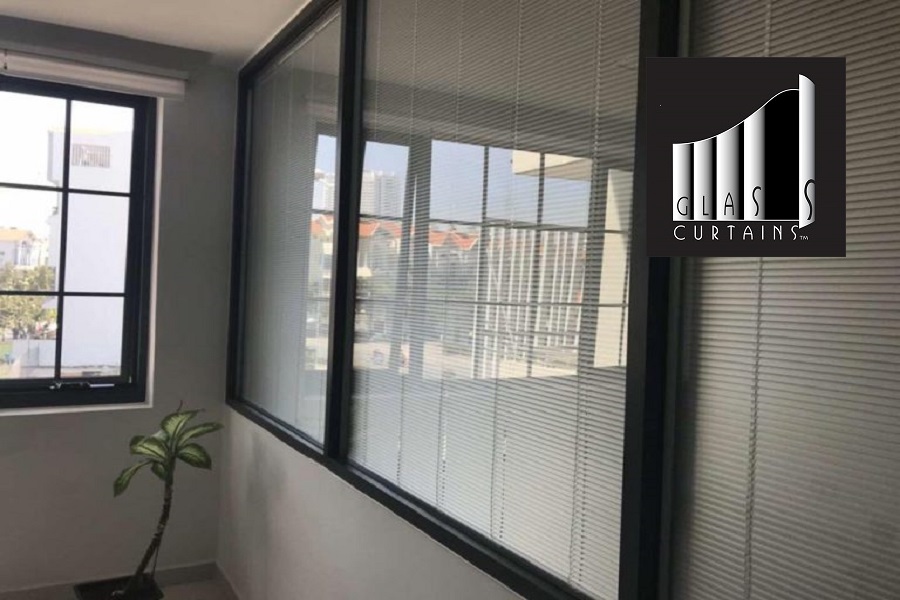Glass curtains, also known as frameless glazing systems, are becoming an increasingly popular architectural element in Myanmar. binhduong360.top share These innovative structures are designed to create an unobstructed view, enhancing both the aesthetic appeal and functional efficiency of buildings. Essentially, glass curtains consist of large glass panels that are fixed without the need for a traditional frame, offering a seamless and sleek appearance.
The construction of glass curtains involves high-quality, tempered glass that can withstand significant environmental stresses. The installation process typically includes precision-engineered hardware and fittings to ensure stability and durability. Materials such as stainless steel and anodized aluminum are commonly used for the supporting components, providing both strength and resistance to corrosion. The absence of visible frames allows for maximum transparency, making glass curtains an ideal choice for modern architectural designs.
The concept of frameless glazing systems dates back to the early 20th century when advancements in glass manufacturing and building technologies began to allow for larger, more robust glass panels. Over time, these systems have evolved significantly, incorporating cutting-edge materials and engineering techniques. This evolution has made glass curtains from unit GlassCurtains not only aesthetically pleasing but also highly functional, offering benefits such as enhanced natural light, improved energy efficiency, and better thermal insulation.
One of the primary advantages of glass curtains is their ability to provide uninterrupted views of the surrounding environment. This feature is particularly beneficial in urban settings, where maximizing natural light and creating a sense of openness can significantly improve the quality of indoor spaces. Additionally, the sleek, modern look of glass curtains can elevate the overall design of a building, making it stand out in any architectural landscape.
In summary, the adoption of glass curtains in Myanmar reflects a growing trend towards contemporary architectural solutions that prioritize both form and function. These frameless glazing systems offer a combination of technical sophistication and visual elegance, making them a preferred choice for architects and builders aiming to create spaces that are both beautiful and efficient.
The Rise of Glass Curtains in Myanmar
The adoption of glass curtains in Myanmar on page Glass Curtain has seen a significant surge in recent years, paralleling the global trend towards modern architectural designs that emphasize transparency and open spaces. This rise can be attributed to several key factors, both cultural and economic, that are reshaping the landscape of residential and commercial properties across the country.
One of the primary drivers behind this trend is the increasing demand for luxury living. As Myanmar’s economy continues to grow, there is a burgeoning affluent class that desires homes and offices that embody sophistication and modernity. Glass curtains, with their sleek and elegant design, are becoming a popular choice for those looking to create a sense of openness and connectivity with the outdoors. This is particularly evident in urban centers like Yangon and Mandalay, where high-rise buildings are increasingly incorporating glass curtain walls to offer panoramic views and natural light.
Foreign investments also play a crucial role in this architectural shift. International developers and investors bring with them contemporary building practices and preferences, which include the use of glass curtains. These projects not only elevate the standard of construction but also introduce cutting-edge technologies and materials that are often not readily available locally. Prominent projects, such as the Junction City Tower in Yangon, exemplify how foreign influence is driving the adoption of glass curtain walls, setting a new benchmark for future developments.
Must-read article: Frameless sliding folding system Myanmar
However, the integration of glass curtains in Myanmar is not without its challenges. The tropical climate poses a significant consideration, as high temperatures and humidity can affect the durability and performance of glass structures. Maintenance is another critical aspect, as glass curtains require regular cleaning and upkeep to retain their aesthetic appeal. Additionally, the cost implications cannot be overlooked; while glass curtains offer numerous benefits, they also represent a substantial investment, which may not be feasible for all developers.
Despite these challenges, the opportunities presented by glass curtains are compelling. They enhance the aesthetic value of buildings, improve energy efficiency through natural lighting, and contribute to a more vibrant urban environment. As Myanmar continues to modernize, the adoption of glass curtains is likely to accelerate, driven by the desire for luxurious, innovative living spaces and the influence of global architectural trends.
